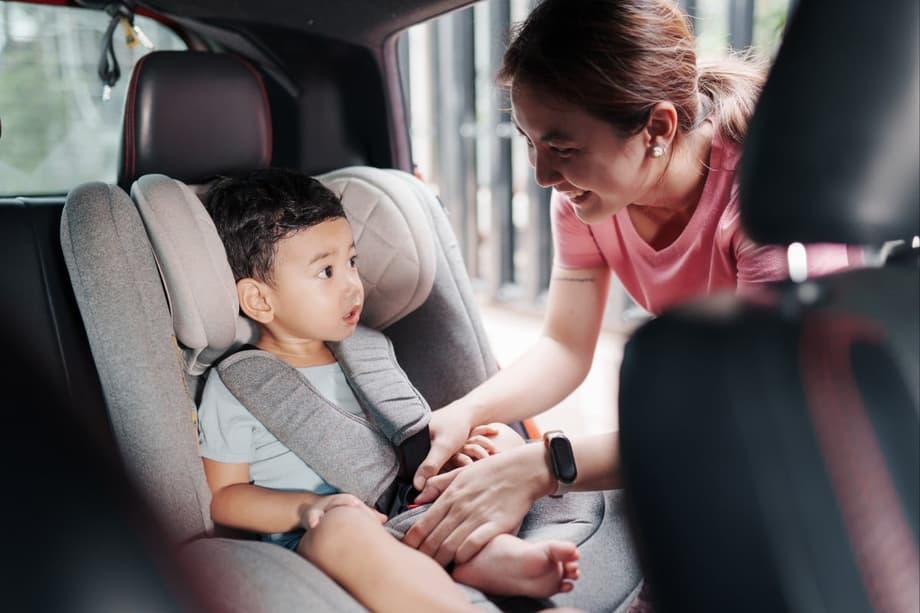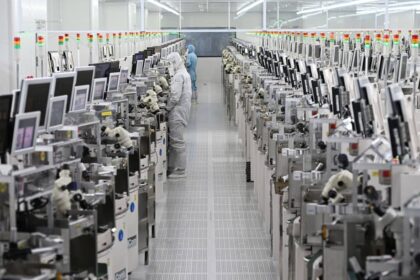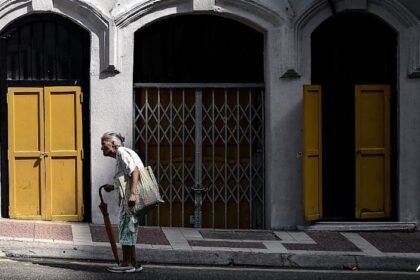Why Hong Kong is tightening child safety rules
Hong Kong will require child passengers in private cars to use approved safety devices starting on November 1, 2025. Children under eight who are shorter than 1.35 metres must be secured in a child restraining device, often called a child car seat or booster, regardless of whether they sit in the front or the rear. Passengers aged eight or above, or with a height of at least 1.35 metres, must use either a suitable child device or an adult seat belt. Drivers who fail to comply can receive a fixed penalty of HK$230, and serious cases can go to court where a fine of up to HK$2,000 may be imposed. The change follows the Road Traffic (Safety Equipment) (Amendment) Regulation 2024 and aims to reduce child deaths and serious injuries in crashes.
- Why Hong Kong is tightening child safety rules
- What is changing and when
- Who must use child restraints
- What counts as a child restraining device
- Penalties and enforcement
- Exemptions and special cases
- How to select and install the right device
- Why this matters for safety
- How Hong Kong compares internationally
- What families, schools, and ride hailing drivers should plan
- How authorities are supporting compliance
- Common scenarios and practical tips
- At a Glance
The Transport Department has highlighted two limited statutory defences for drivers. A driver will not be guilty if the driver reasonably believed the child was at least eight years old or at least 1.35 metres tall, or if the child was being transported in an emergency where there was no time to arrange a suitable device. These are safeguards for rare situations, not permissions for routine trips without proper restraint.
Child passengers have been increasingly hurt in private car crashes. In accidents where children under eight were injured or killed, the share involving private cars rose from about 43 percent in 2021 to around 60 percent in 2024. International and local studies show that well fitted child restraints can dramatically lower the chance of death or serious injury. In head on collisions, proper devices can reduce the risk by roughly 70 percent. The new rule brings Hong Kong in line with practices in the European Union, Japan, Singapore, and several mainland Chinese cities.
What is changing and when
From November 1, 2025, private car drivers must ensure that any child passenger who is under eight and shorter than 1.35 metres uses an approved child restraining device. The requirement applies to every seat in the vehicle. Children who have either reached eight years of age or attained a height of 1.35 metres may use an adult seat belt, and younger or shorter children must be in an age and size appropriate device. If a child who needs a device is not secured, the driver must not drive the car.
Who must use child restraints
The law uses a simple threshold. If a child is under eight and shorter than 1.35 metres, the child must use a child restraining device in a private car. Either condition triggers the requirement. The obligation covers both front and rear seats. The driver bears responsibility for compliance.
Height matters for belt fit. Adult seat belts are designed for adult frames. On smaller children, the lap belt rides up to the abdomen, which raises the risk of internal injuries in a crash. The shoulder belt can cross the neck instead of the chest, which increases the chance of head and neck injuries. The right device repositions the belts and supports the head and torso in a way that an adult belt cannot provide for smaller bodies.
Families should measure height with shoes off and a flat surface against a wall. If a child is near the 1.35 metre mark, use of an approved booster or safety seat is still encouraged because the fit of the lap and shoulder belts is the real test of safety. A device that positions the belt low across the hips and flat across the chest is safer than a belt that touches the abdomen or face.
What counts as a child restraining device
The Transport Department recognises a range of devices that meet specified safety standards. Options include rear facing child safety seats for infants and toddlers, forward facing child seats for older toddlers and young children, high back and backless boosters for larger children, and portable solutions such as seat belt adjusters and wearable safety restraint vests. Foldable boosters can help for occasional trips. All devices must comply with approved standards and carry permanent markings that confirm compliance. Recognised standards include British and European regulations such as ECE R44 and ECE R129, United States standard FMVSS 213, Australian and New Zealand standard AS NZS 1754, and relevant Japanese and Chinese standards.
Portable devices such as belt adjusters or wearable vests can improve belt fit for short, occasional rides, and are better than no protection. They generally offer less side impact protection than a full child safety seat or a high back booster. For frequent travel, a device with side bolsters and head support provides improved protection.
Compatibility matters. Many modern child seats use ISOFIX anchorage systems. Check with the retailer or supplier to confirm that a specific model is approved for your car. Some infant seats can clip into a compatible stroller, which can simplify transfers. Always read and follow the installation manual and check that all tethers and anchors are secure before setting off.
For official guidance and examples, see the Transport Department page on child restraining devices. The department hosts selection tips, standard labels to look for, and diagrams of correct belt routing. Visit the information page at td.gov.hk.
Penalties and enforcement
Police may issue a fixed penalty notice of HK$230 to a driver who allows a child to travel without the required device or seat belt. In serious cases, such as repeated non compliance or cases involving injury, the matter can go to court, which can impose a fine of up to HK$2,000. The legal duty rests on the person who is driving. The message from the authorities is clear. Do not drive unless everyone who needs a device or belt is safely buckled.
Two statutory defences exist. A driver can avoid criminal liability if the driver reasonably believed the child was at least eight years old or at least 1.35 metres tall. A defence also applies if the trip was an emergency and there was no time to arrange an appropriate device. These defences are designed for limited scenarios. Drivers should not rely on them in routine travel. Carrying a portable booster or wearable restraint vest can help when giving a lift to a friend’s child or when plans change at short notice.
Exemptions and special cases
The new requirement applies to private cars. It does not extend the same child device mandate to taxis, franchised buses, or other forms of public transport. That does not remove existing seat belt rules. Where belts are fitted, passengers, including children who meet the belt fit threshold, must buckle up. Parents who rely on taxis may wish to keep a portable booster or a wearable restraint vest on hand for their child. Better belt fit is always safer than no adjustment at all.
Current legislation also contains a long standing requirement for certain categories beyond private cars. If the front seat passenger of a private light bus or a goods vehicle is a child aged two or less, a child restraining device must be used. Families should check the label on the device for weight and height limits and place infants and toddlers rear facing as long as the seat allows. The head and neck of a small child are better protected in a rear facing seat because crash forces spread across the back and shell.
How to select and install the right device
Pick a device by a child’s height and weight range, using age as a rough guide only. Each product lists a suitable range. A device that is too large will not position the belt correctly. A device that is too small will not protect the head and torso in a crash. Children often move from rear facing to forward facing, then to a high back booster, and finally to an adult belt when the seat belt fits the hips and shoulder properly.
Look for compliance markings on the shell or label. ECE R129 and ECE R44 labels list approved weight or height ranges and testing categories. Products certified under FMVSS 213 or AS NZS 1754 will have permanent marks and user manuals that describe correct use. If a label is missing or unreadable, avoid the purchase.
Before the first ride, read the manual, install the device firmly, then do a tug test at the belt path. The seat should not move more than a small amount. Use tether anchors where provided. In an ISOFIX installation, both plastic guides should be seated and both latches must fully click. If the car uses a lap and shoulder belt to secure a child seat, route the belt as the manual shows, lock it, and check again after a short drive.
Avoid second hand purchases unless you know the full history. After a collision, a device can be damaged internally even if the shell looks intact. Components can warp or stretch. Manufacturers usually advise replacing the seat after a crash. If you must clean the cover or straps, follow the manual. Strong chemicals can degrade the materials. Never add accessories that were not supplied with the product because they can interfere with crash performance.
Why this matters for safety
Crash dynamics are unforgiving. In a sudden stop at urban speeds, an unrestrained child continues moving forward at the speed of the vehicle. Adult belts assume a shoulder and pelvis shape that do not match a young child’s body. A child restraining device changes the geometry so that crash forces reach the stronger parts of the skeleton. The device also helps keep the head within a safer space inside the cabin during side and front impacts.
Local data underscores the need for change. Private cars accounted for a growing share of serious and fatal injuries among children under eight in recent years, rising from about 43 percent in 2021 to around 60 percent in 2024. International research has long found that proper restraints lower the risk of child death and serious injury. Studies of head on collisions indicate risk reductions in the range of 70 percent when children are correctly restrained.
How Hong Kong compares internationally
Many jurisdictions require size appropriate restraints for children. European countries regulate by height and weight under ECE rules. Japan, Singapore, and several mainland Chinese cities require child car seats or boosters until a defined age or height. The United Kingdom introduced similar rules in 2006. Hong Kong’s new requirement, grounded in the 2024 safety equipment amendment, aligns the city with these standards. The law sets a clear threshold at eight years of age or 1.35 metres in height, which matches common international practice.
Compliance standards are harmonised. Devices meeting ECE R129 or ECE R44 from Europe, FMVSS 213 from the United States, AS NZS 1754 from Australia and New Zealand, and equivalent Japanese and Chinese standards are recognised. This approach gives families a wide range of compliant products to choose from while maintaining a high safety bar.
What families, schools, and ride hailing drivers should plan
Families who drive should confirm measurements and buy an appropriate device before the November 2025 deadline. If more than one car is in use, consider a second base or a portable booster for flexibility. For school runs and carpools, plan seat assignments so each child has a correctly sized device. Caregivers and grandparents should know how to install and buckle the device, including how to adjust harness height and belt routing.
Schools and activity centres that rely on private car transport should review pickup arrangements. A clear policy that a child rides only when a suitable device is available removes pressure on drivers to make unsafe exceptions. For occasional taxi rides, a foldable booster or wearable restraint vest that meets approved standards can raise belt fit quality. Ride hailing trips in private cars are covered by the same rule as any private car journey. Drivers on these platforms should be ready to refuse a trip if the required device is not available for a child who needs one.
How authorities are supporting compliance
The Transport Department has said it will work with the Police and the Road Safety Council on publicity and education. Parents and drivers are encouraged to select and purchase devices suited to the child’s body size, follow the installation instructions, and seek advice from retailers or manufacturers when in doubt. The department is also coordinating with the Consumer Council to improve product information for the public. Official updates and educational posts are available on the Transport Department’s social media, and enquiries can be made by calling the hotline at 2804 2600. For detailed guidance, the department’s child restraining device information page provides standards, examples, and selection tips at td.gov.hk.
Common scenarios and practical tips
Short rides still need restraints. Most crashes happen close to home and at urban speeds. Buckle up every time. Bring spare devices for visiting relatives or keep a portable booster in the boot for unexpected pickups. If a child falls asleep, check harness tension and head position before moving off, then stop and adjust if needed. Do not loosen the harness to make the child comfortable, because a loose harness allows too much forward movement in a crash.
Children with larger builds may grow out of harnessed seats earlier, but still need a high back or backless booster until the adult seat belt fits correctly. The adult belt fits when the lap belt sits low on the hips, the shoulder belt crosses the middle of the chest, and the child can sit back with knees bent comfortably at the edge of the seat. If any of these do not hold, continue using a booster.
At a Glance
- Effective date for the new rule is November 1, 2025.
- Children under eight who are shorter than 1.35 metres must use an approved child restraining device in private cars.
- Children aged eight or above, or at least 1.35 metres tall, must use an adult seat belt or a suitable child device.
- Applies to front and rear seats, and the driver is responsible for compliance.
- Fixed penalty is HK$230, with a court fine up to HK$2,000 in serious cases.
- Two statutory defences exist, reasonable belief about age or height, and emergencies with no time to arrange a device.
- Approved devices include child seats, high back boosters, backless boosters, seat belt adjusters, and wearable restraint vests that meet recognised standards.
- Portable devices improve belt fit for occasional trips but offer less side protection than full seats.
- Taxis and public transport are not covered by the child device mandate, but seat belts must be used where fitted.
- Official guidance and examples are available from the Transport Department at td.gov.hk and through the hotline 2804 2600.












